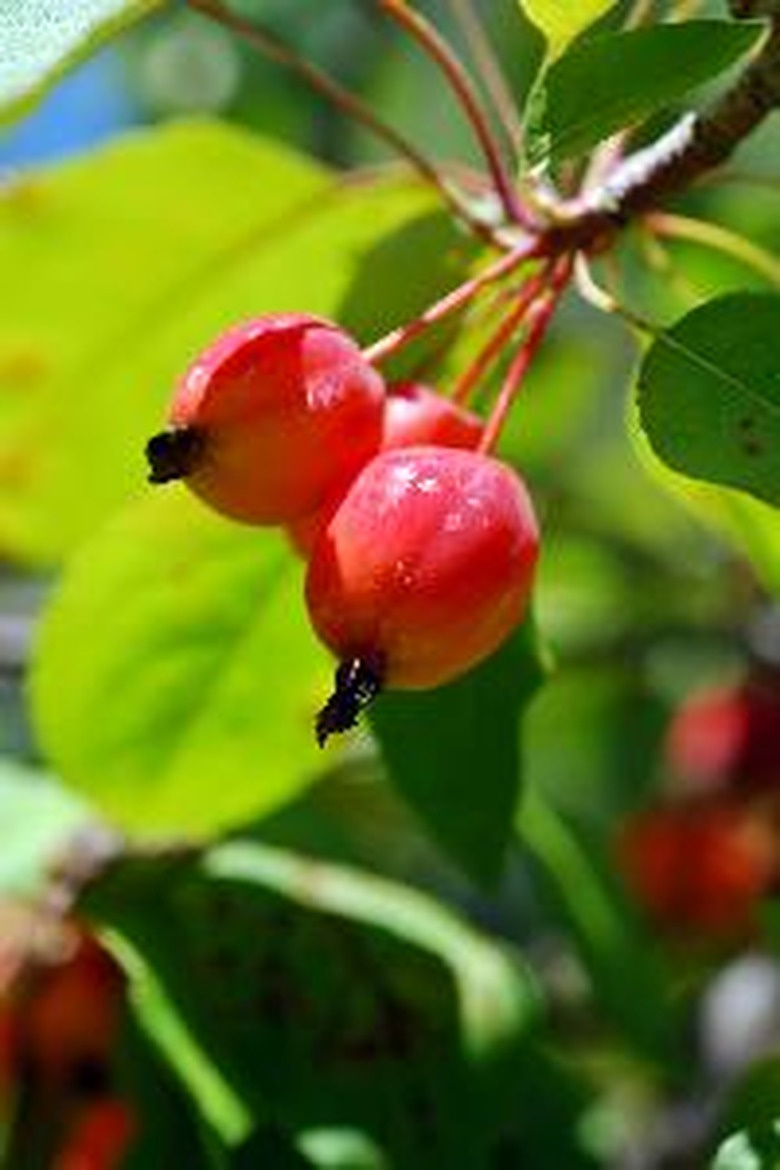About Robinson Crabapple Trees
The Robinson crabapple (Malus 'Robinson') is a fast growing crabapple tree variety that grows up to 25 feet tall. The deciduous tree is often grown as a specimen tree in the home garden, enjoyed for its edible fruits, showy flowers and fall colors. The tree is highly attractive to wildlife.
The Robinson crabapple (Malus 'Robinson') is a fast growing crabapple tree variety that grows up to 25 feet tall. The deciduous tree is often grown as a specimen tree in the home garden, enjoyed for its edible fruits, showy flowers and fall colors. The tree is highly attractive to wildlife.
Appearance
The Robinson crabapple grows to a mature height of between 15 to 25 feet. The tree has a rounded crown with oval leaves that emerge purple before changing to a shade of bronzed green. In the fall, leaves turn a rich shade of yellow. The tree blooms with deep pink flowers that give way to bright red fruits in the fall. Fruits may continue on into the winter, attracting birds.
- The Robinson crabapple (Malus 'Robinson') is a fast growing crabapple tree variety that grows up to 25 feet tall.
- In the fall, leaves turn a rich shade of yellow.
Location
Plant the Robinson crabapple in a bright, sunny location, ideally in a mulched bed where the tree can receive drip irrigation. Avoid planting the tree in high maintenance turf grass, as an excess of water and fertilizer can lead to disease. Though tolerant of light shade, Robinson crabapple will fruit and flower less in shady situations, and may be more susceptible to fungus. The tree is hardy in USDA zones 4 to 8.
Culture
Robinson crabapple is adaptable to a wide range of soils, though it does best in a well-draining, acidic loam with medium moisture. Soil pH should be between 6 and 8. Once established, the tree is fairly drought tolerant. Trees only need between 15 to 20 inches of rain per year. A condition called chlorosis, which causes yellow leaves, may occur in trees grown in soils that are too alkaline, or in soils that are excessively fertilized.
- Plant the Robinson crabapple in a bright, sunny location, ideally in a mulched bed where the tree can receive drip irrigation.
- Robinson crabapple is adaptable to a wide range of soils, though it does best in a well-draining, acidic loam with medium moisture.
Maintenance
Prune the Robinson crabapple in late winter or early spring, or right after flowering. Pruning during the growing season can result in decreased flowering and fruiting the following year, as new buds can be damaged. Check occasionally for disease such as apple scab, a fungal disease that affects fruit and leaves and occurs when foliage gets wet. Crabapple trees have strong wood and rarely suffer from ice and snow damage.
